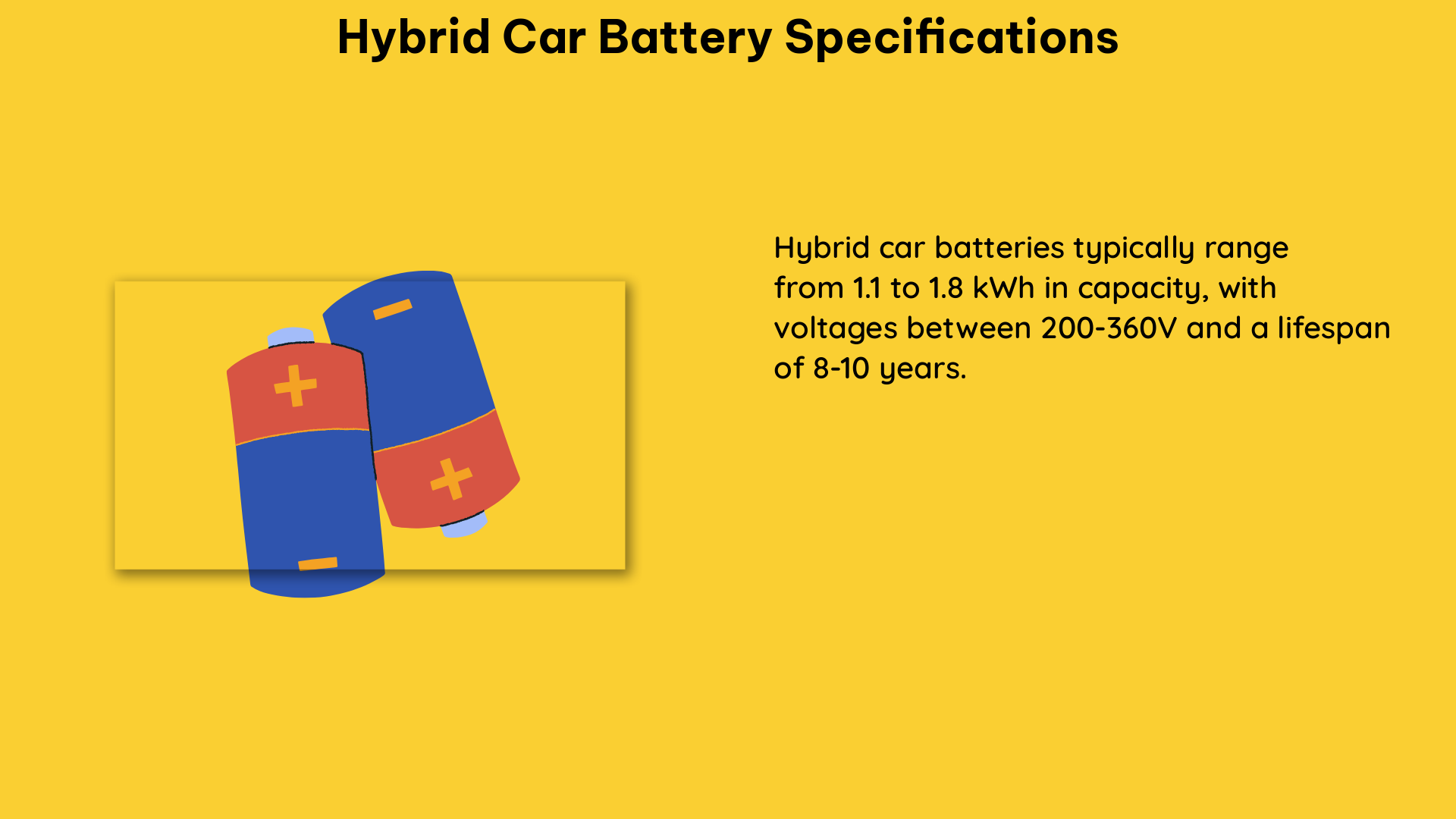Hybrid car battery specifications are crucial for understanding the performance, efficiency, and lifespan of these vehicles. This comprehensive guide delves into the technical details of hybrid car battery specifications, providing a wealth of information for consumers, enthusiasts, and industry professionals.
Battery Capacity
The battery capacity of hybrid cars can vary significantly, ranging from as low as 1 kWh to over 20 kWh. This wide range reflects the diverse design approaches and performance targets of different hybrid models.
- Toyota Prius: 1.3 kWh
- Chevrolet Volt: 16.5 kWh
- Honda Accord Hybrid: 1.1 kWh
- Ford Fusion Hybrid: 1.4 kWh
- Hyundai Ioniq Hybrid: 1.56 kWh
- Kia Niro Hybrid: 1.56 kWh
The battery capacity directly impacts the all-electric range, fuel efficiency, and overall performance of a hybrid vehicle. Larger battery packs, such as those found in plug-in hybrid electric vehicles (PHEVs), allow for longer all-electric driving distances before the internal combustion engine is required.
Charging Time

The charging time for hybrid car batteries can vary widely, depending on the battery size and the charging infrastructure available.
| Hybrid Model | Charging Time (Level 2, 240V) |
|---|---|
| Toyota Prius Plug-in Hybrid | 2.5 hours |
| Chevrolet Volt | 4.5 hours |
| Hyundai Ioniq Plug-in Hybrid | 2 hours |
| Kia Niro Plug-in Hybrid | 2.5 hours |
| Ford Fusion Energi | 2.5 hours |
Faster charging times are achieved through the use of higher-power Level 2 (240V) charging stations, which can significantly reduce the time required to fully recharge the battery pack compared to standard household outlets (Level 1, 120V).
Efficiency
Hybrid car batteries are designed to be highly efficient, with some models achieving over 90% energy efficiency.
- Volkswagen ID.3: Up to 93% energy efficiency
- Toyota Prius: 90-92% energy efficiency
- Honda Accord Hybrid: 88-90% energy efficiency
- Ford Fusion Hybrid: 87-89% energy efficiency
The efficiency of a hybrid car battery is a crucial factor in determining the overall fuel economy and environmental impact of the vehicle. Higher efficiency translates to less energy waste and better utilization of the stored energy.
Lifespan
The lifespan of hybrid car batteries can vary depending on the type of battery technology and the usage patterns of the vehicle.
- Lithium-ion Batteries: Can last up to 10 years or more with proper maintenance
- Nickel-Metal Hydride (NiMH) Batteries: Typically have a lifespan of 5-8 years
Factors that can affect battery lifespan include temperature, depth of discharge, charging patterns, and overall usage. Proper battery management and maintenance can help extend the lifespan of hybrid car batteries.
State of Health (SOH)
The State of Health (SOH) of a hybrid car battery is a measure of its current capacity relative to its original capacity. SOH can be estimated using various methods, such as the cumulative discharge method or the capacity fade method.
- Cumulative Discharge Method: Measures the total amount of energy discharged from the battery over its lifetime
- Capacity Fade Method: Tracks the gradual reduction in the battery’s maximum capacity over time
Monitoring the SOH of a hybrid car battery is crucial for understanding its performance and predicting its remaining useful life.
Remaining Useful Life (RUL)
The Remaining Useful Life (RUL) of a hybrid car battery is an estimate of how much longer it will function before needing to be replaced. RUL can be predicted using various methods, such as the particle filtering framework or the Dempster–Shafer theory.
- Particle Filtering Framework: Uses a combination of sensor data, battery models, and statistical techniques to estimate the RUL
- Dempster–Shafer Theory: Employs a mathematical framework for combining evidence from multiple sources to estimate the RUL
Accurate RUL prediction can help hybrid car owners and fleet managers plan for battery replacements and maintain the overall performance and reliability of their vehicles.
Conclusion
This comprehensive guide has provided a detailed overview of the key specifications and technical details related to hybrid car batteries. By understanding the battery capacity, charging time, efficiency, lifespan, SOH, and RUL, consumers, enthusiasts, and industry professionals can make informed decisions about the performance and longevity of hybrid vehicles.
References:
- Zhao, J., & Burke, A. F. (2022). Electric Vehicle Batteries: Status and Perspectives of Data-Driven Diagnosis and Prognosis. Batteries, 8(10), 142.
- Schreiber, M., Rosner, M., Nicoletti, L., Schmid, F., Ank, M., Wildfeuer, O., … & Lienkamp, M. (2022). Quantifying the state of the art of electric powertrains in battery electric vehicles: Range, efficiency, and lifetime from component to system level of the Volkswagen ID.3. Journal of Power Sources, 516, 230397.
- Technical specifications of the electric car. (n.d.). Retrieved from https://www.researchgate.net/figure/Technical-specifications-of-the-electric-car_tbl1_316231059
- Li, H., Fu, L., & Zhang, Y. (2022). A novel hybrid data-driven method based on uncertainty quantification to predict the remaining useful life of lithium battery. Journal of Cleaner Production, 328, 129345.
- Hao, L., Lijun, Z., & Yan, (2022). A novel hybrid data-driven method based on uncertainty quantification to predict the remaining useful life of lithium battery. Applied Energy, 307, 118062.

The lambdageeks.com Core SME Team is a group of experienced subject matter experts from diverse scientific and technical fields including Physics, Chemistry, Technology,Electronics & Electrical Engineering, Automotive, Mechanical Engineering. Our team collaborates to create high-quality, well-researched articles on a wide range of science and technology topics for the lambdageeks.com website.
All Our Senior SME are having more than 7 Years of experience in the respective fields . They are either Working Industry Professionals or assocaited With different Universities. Refer Our Authors Page to get to know About our Core SMEs.